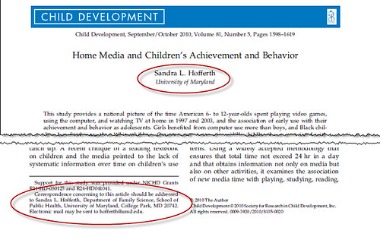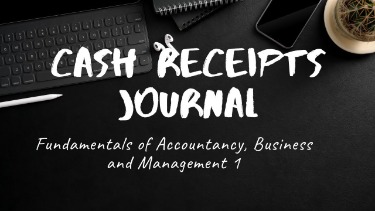Content
- Cash Disbursement Journal
- What Does Special Journal Mean?
- General Journal Vs Special Journal
- Purpose And Nature Of Transactions Recorded
- How Many Types Of Journal Entries Are There?
- How Do You Record Transactions In Special Journals?
Account numbers are placed in parentheses below the column to indicate that the total has been posted. Many companies use a multi‐column sales journal that provides separate columns for specific sales accounts and for sales tax payable. Each line in a multi‐column journal must contain equal debits and credits. For example, the entries in the sales journal to the right appear below in a multi‐column sales journal that tracks hardware sales, plumbing sales, wire sales, and sales tax payable. Individual entries are still posted daily to the accounts receivable subsidiary ledger accounts, and each column total is posted at the end of the accounting period to the appropriate general ledger account. Each day, individual entries are posted to the accounts payable subsidiary ledger accounts.
What is a simple definition of journal?
A journal is a detailed account that records all the financial transactions of a business, to be used for the future reconciling of accounts and the transfer of information to other official accounting records, such as the general ledger.A journal entry is a recording of a transaction into a journal like the general journal or another subsidiary journal. Journal entries for accounting require that there be a debit and a credit in equal amounts.
Cash Disbursement Journal
A special journal, on the other hand, is a more systematic form of recording transactions and may consist of many columns depending on the information needs of the bookkeepers, accountants, managers, owners and auditors etc. Although companies create special journals for other types of repetitive transactions, almost all merchandising companies use special journals for sales, purchases, cash receipts, and cash disbursements. Notice how these two different types of entries are recorded in different journals?The Journal is a subsidiary book, whereas Ledger is a principal book. The Journal is known as the book of original entry, but Ledger is a book of second entry. Definition of General Ledger Account A general ledger account is an account or record used to sort, store and summarize a company’s transactions. These accounts are arranged in the general ledger with the balance sheet accounts appearing first followed by the income statement accounts. Ageneral journalto record adjusting and closing entries and any other entries that do not fit in one of the special journals. You can see how these journal entries would be recorded in the general ledger as by clicking fooz ball townto save space. It records all the transactions related to the return of goods back by the customers that were sold on credit and allowances given to the customers.Under the periodic inventory method, the credit would be to Purchase Returns and Allowances. In addition to four columns used in above format of general journal, sometime a posting reference column is also used to record the page number particular account in ledger. This column is helpful to locate a particular account from the ledger book. In a computerized accounting system, this column is used to enter account number in the company’s general ledger. Special Journals are chronological records of frequently occurring transactions such as sales, purchases and cash receipts/payments.

Accounts Receivable AccountAccounts receivables is the money owed to a business by clients for which the business has given services or delivered a product but has not yet collected payment. They are categorized as current assets on the balance sheet as the payments expected within a year. July 12 Purchased $10,000 of merchandise inventory, terms 2/15, n 45, FOB Destination from Gus Grass. As separate persons may handle each of these journals, the company needs to appoint various employees, thereby increasing the employee cost of the company. Credit note is a document issued by a seller that acknowledges that a customer is entitled to receive a reduction in the amount owing on goods purchased on credit.
What Does Special Journal Mean?
The purchases journal to the right has only one column for recording transaction amounts. This special journal is used to record purchases made on credit with vendors. By only recording credit purchases in this journal, accountants and bookkeepers can use this as a record of all the credit purchases during a period. Special journals are specialized lists of financial transaction records which accountants call journal entries.Entries in the Other column are posted individually to the general ledger accounts affected, and the account numbers are placed in the cash receipts journal’s reference column. A capital X is placed below the Other column to indicate that the column total cannot be posted to a general ledger account. Entering transactions in the general journal and posting them to the correct general ledger accounts is time consuming. In the general journal, a simple transaction requires three lines—two to list the accounts and one to describe the transaction. The transaction must then be posted to each general ledger account.
How and when are special journals posted?
Individual entries are still posted daily to the accounts receivable subsidiary ledger accounts, and each column total is posted at the end of the accounting period to the appropriate general ledger account. Purchases journal. The purchases journal lists all credit purchases of merchandise.All of these are used to record specific transactions and keep organized records outside of thegeneral journal. In other words, this system is a way to categorize transactions into different types and groups. Entries in this journal usually include the date of the entry, the name of the supplier, and the amount of the transaction. Some companies include columns to identify the invoice date and credit terms, thereby making the purchases journal a tool that helps the companies take advantage of discounts just before they expire.The origin of the invoice is either delivered with the goods or sent separately to the customer. Cash Payments Journals record transactions that involve expenditures paid with cash and involves the cash Source documents are likely receipts and cheque butts. If the owner of a business withdraws cash from the business an entry is made in the CPJ.
General Journal Vs Special Journal
The number of the ledger account to which the journal entry was posted is recorded in the folio number column of the journal. Purchases Journals record transactions that involve purchases purely on credit. For instance, the purchase of inventory on credit is recorded in the purchases journal. A special journal is useful in a manual accounting or bookkeeping system to reduce the tedious task of recording both the debit and credit general ledger account names and amounts in a general journal.
- For example, when a sales invoice is prepared by using accounting software, both the general ledger and subsidiary accounts will be updated instantly and accurately.
- If the transaction is of a cash nature, you must be convinced that money/cheque/credit card was also exchanged at the time that the good or service was exchanged.
- July 30 Sold $7,000 of merchandise inventory, terms 1/15, n 30, FOB Shipping point with cost of goods sold $5,000 to Bobby Blue.
- If the transaction affects a control account, the posting must be done twice—once to the subsidiary ledger account and once to the controlling general ledger account.
- Notice the dates and posting references applied to each entry in the illustration to the right.
The cash receipts journal is used to record all receipts of cash for any reason. Anytime money comes into the company, the cash receipts journal should be used. General journal is used to record such transactions that are not repetitive in nature and for which no special journal is maintained.
Purpose And Nature Of Transactions Recorded
Notice the dates and posting references applied to each entry in the illustration to the right. Each day, individual sales journal entries are posted to the accounts receivable subsidiary ledger accounts so that customer balances remain current. Customer account numbers are placed in the sales journal’s reference column to indicate that the entries have been posted. At the end of the accounting period, the column total is posted to the accounts receivable and sales accounts in the general ledger.

General journal is a daybook or journal which is used to record transactions relating to adjustment entries, opening stock, accounting errors etc. In accounting and bookkeeping, a journal is a record of financial transactions in order by date. In accounting, the controlling account is an account in the general ledger for which a corresponding subsidiary ledger has been created. For example, “accounts receivable” is the controlling account for the accounts receivable subsidiary ledger. Special journals are in the form of a table of numerous rows and multiple columns. The names of columns vary based on the type of transaction in a special journal. If the transaction is of a credit nature, you will assume that the cash will be exchanged after the exchange of the good or service.
How Many Types Of Journal Entries Are There?
Delivery note is a document that sets out the type and quantity of the inventory delivered to the purchaser. When the inventory arrives at the premises of the purchaser, the delivery note is signed by the purchaser and is evidence that the goods ordered have been delivered. Dummies has always stood for taking on complex concepts and making them easy to understand. Dummies helps everyone be more knowledgeable and confident in applying what they know. Whether it’s to pass that big test, qualify for that big promotion or even master that cooking technique; people who rely on dummies, rely on it to learn the critical skills and relevant information necessary for success. July 16 Returned $2,500 of merchandise damaged in shipment from July 12 purchase. Receipt when a business receives money or cheques over the shop counter it will usually issue a receipt.Businesses may need to record countless sales transactions per day. Recording all such transaction directly in general journal would be extremely time consuming and error prone.When the company receives the payment in the future against accounts receivable, then the same will be recorded in the cash receipt journal. If there is any return from the customer, then the same will be recorded in the sales returns and the allowances journal. Under the double-entry system, there are mainly 7 different types of journal in accounting. These are termed as a daily journal, subsidiary journal or special journal. Most large size business concerns record particular transactions in special journal, side by side general journal.For example, when a sales invoice is prepared by using accounting software, both the general ledger and subsidiary accounts will be updated instantly and accurately. This entry would then be posted to the accounts payable and merchandise inventory accounts both for $2,500.July 25 Paid for the July 15 purchase from Gus Grass of $10,000 less the 2% discount and $2,500 return. July 15 Received payment from Robby Red from $5,000 sale less the 1% discount. July 15 Received payment from Robby Red from July 5 sale less the discount.